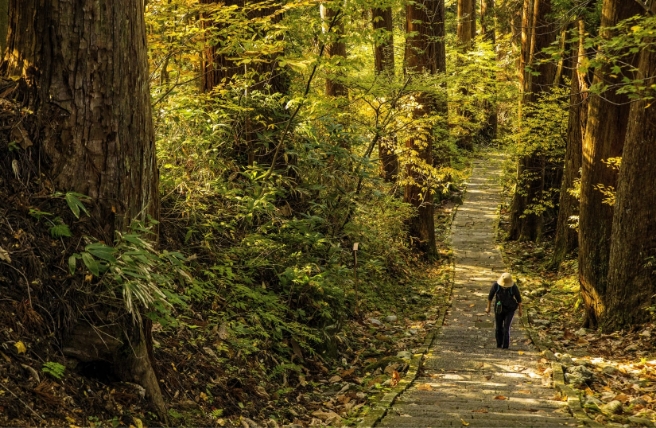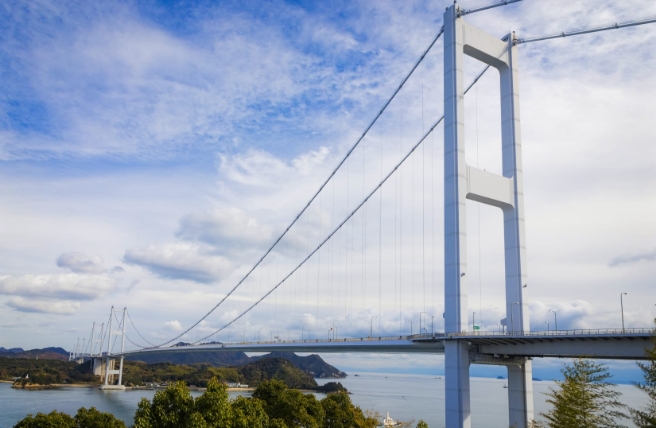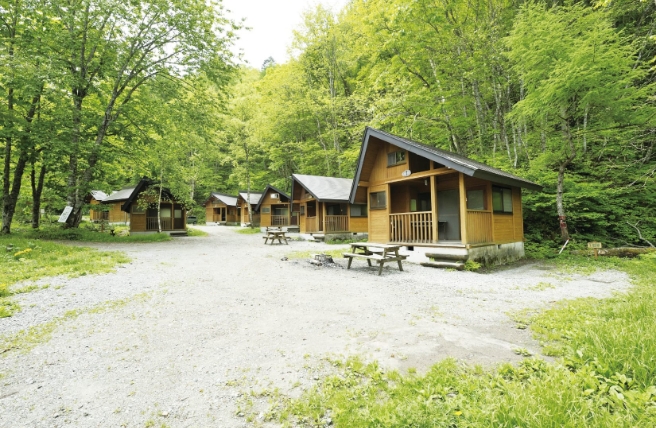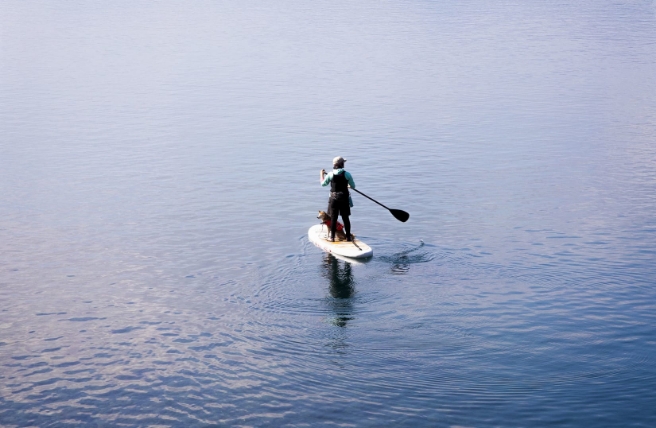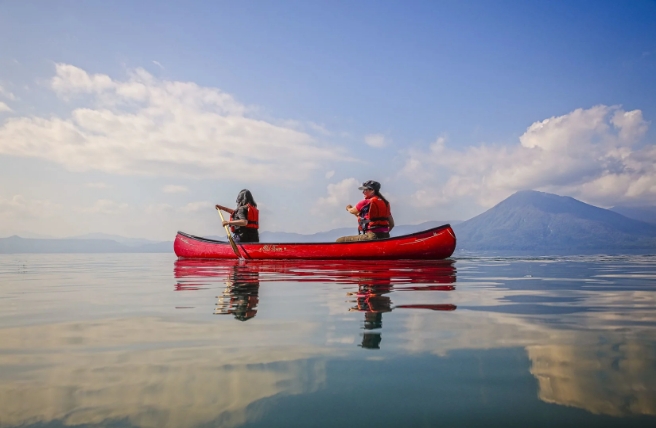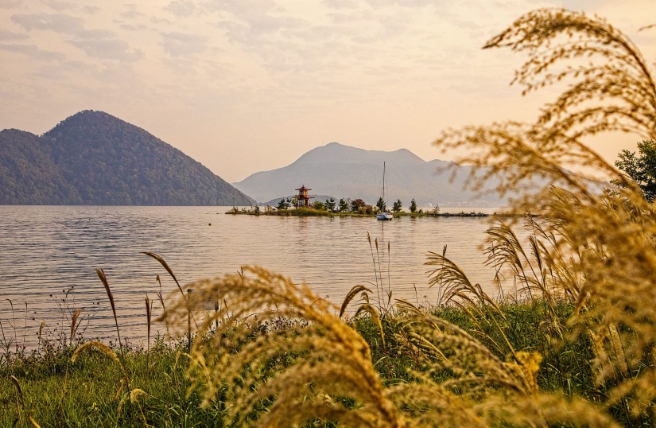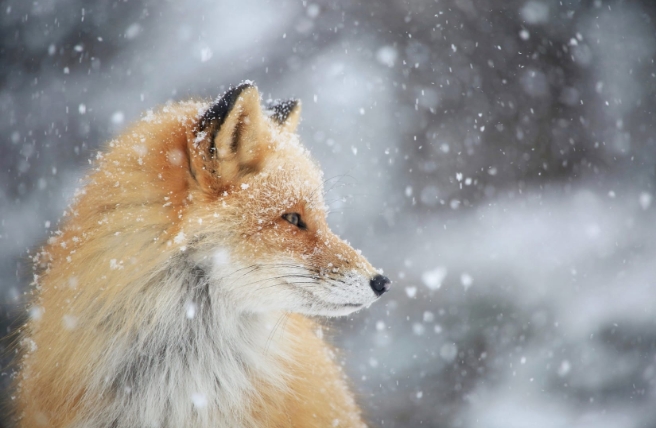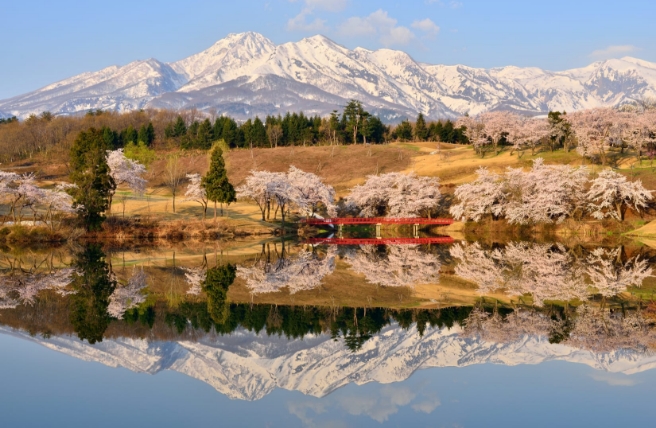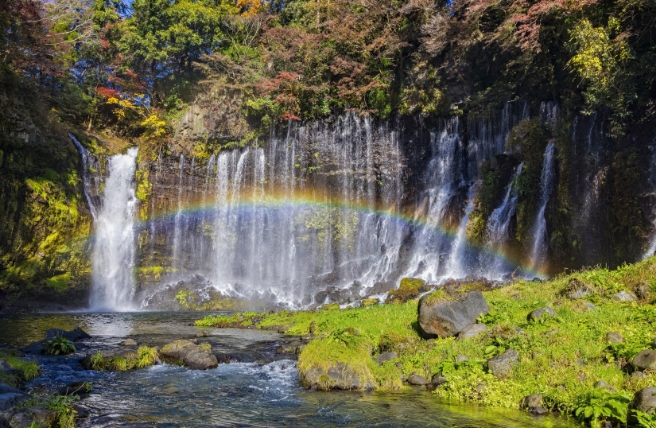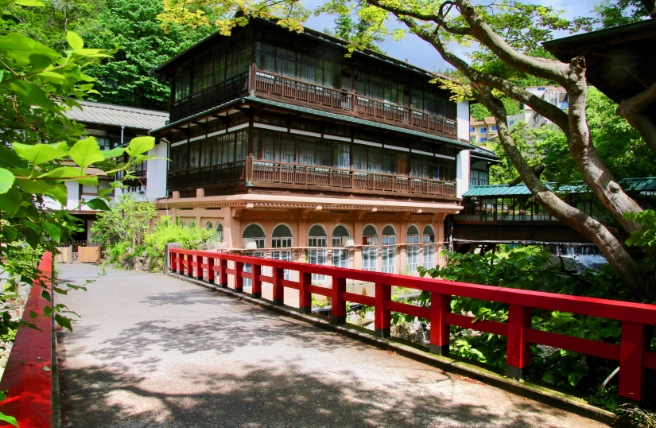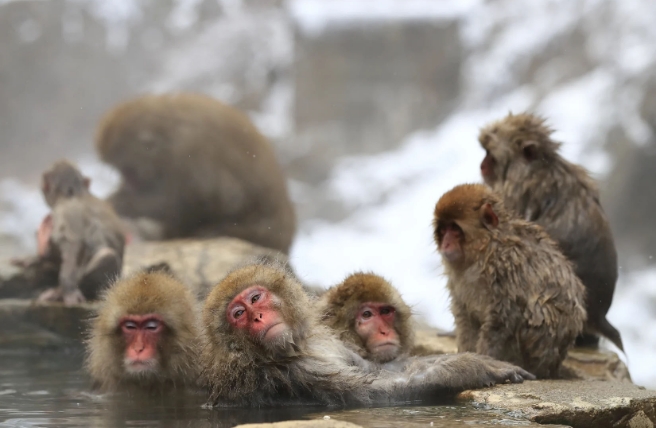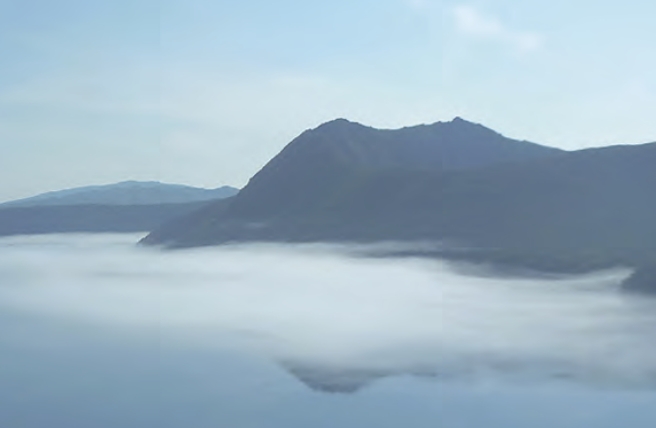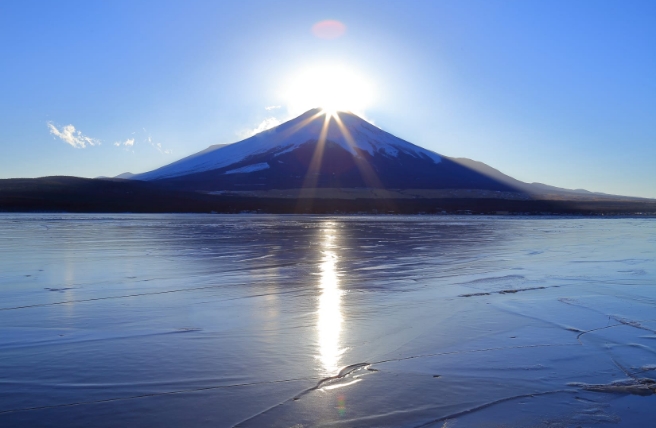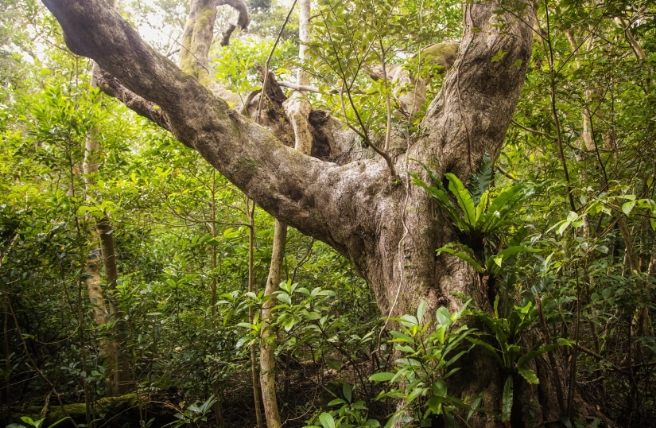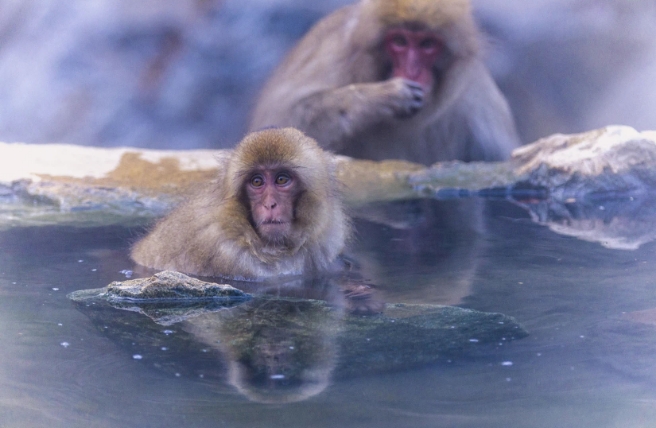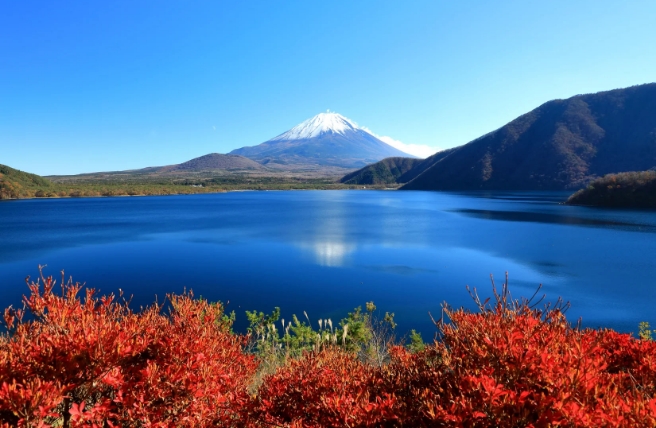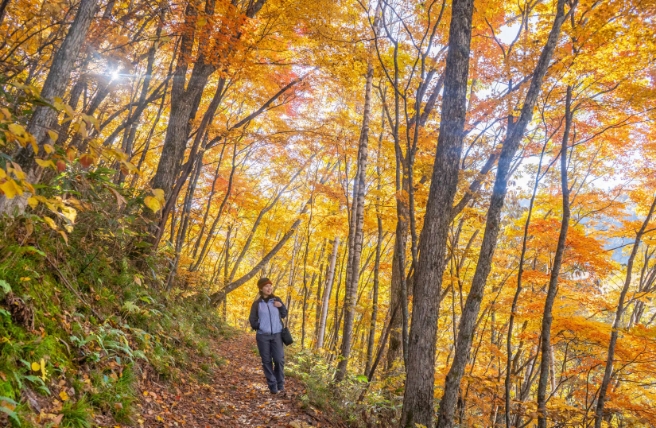
Spring views of Mount Iizuna in Myoko-Togakushi renzan National Park
Spring Blossoms
Cherry blossom season steals the spotlight during spring in Japan, with the first blooms opening at the southern tip of the country and gradually spreading north. You can spot delicate pink cherry blossoms (sakura) in national parks from the beginning of January in Okinawa until the end of May in Hokkaido.
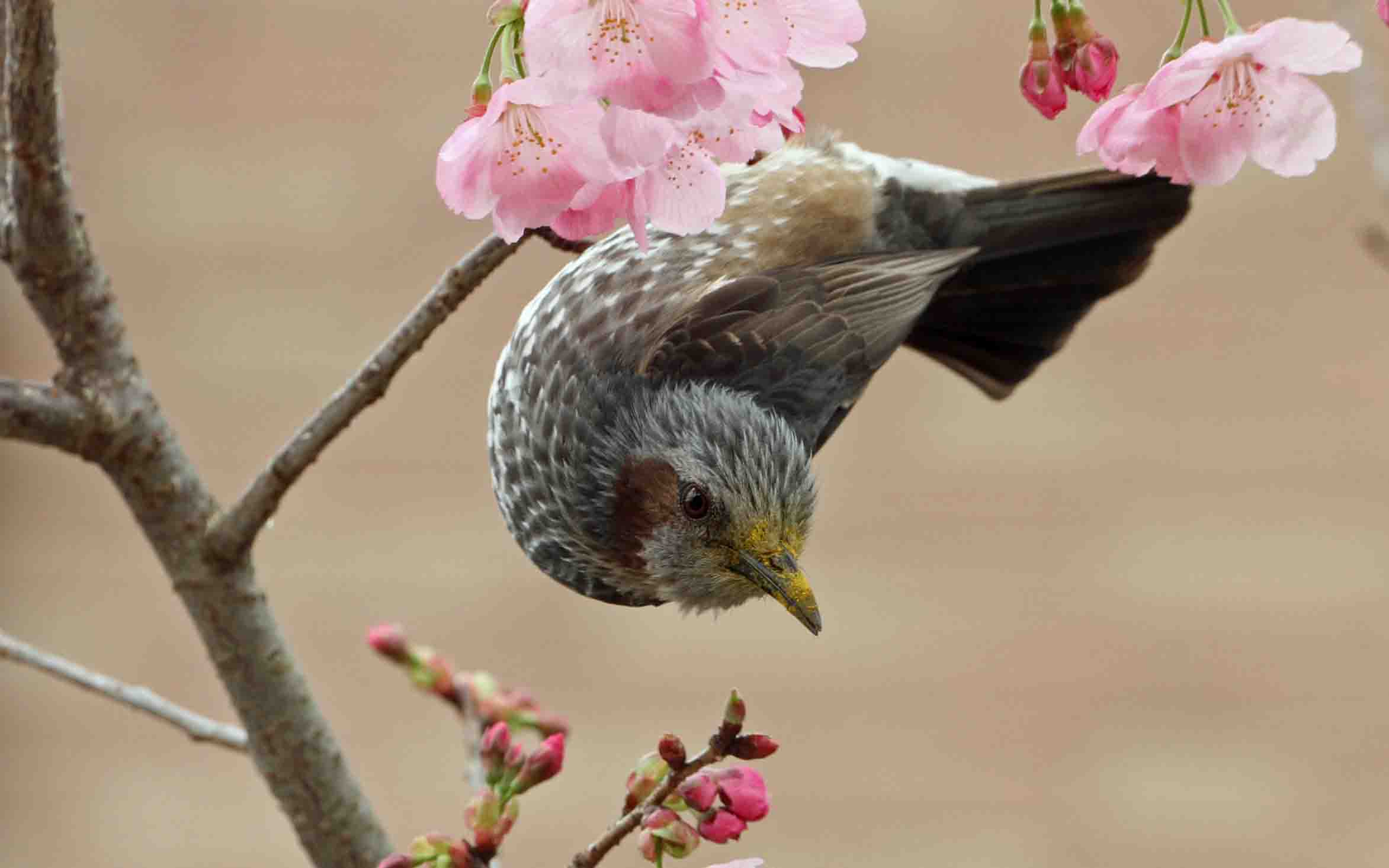
A bulbul among the cherry blossoms in Fuji-Hakone-Izu National Park
Around mid-April, the cherry blossoms around Mount Fuji begin to open. In Fuji-Hakone-Izu National Park, you can find cherry blossoms along Lake Kawaguchi’s shore, with a wonderful view from Ubuyagasaki Shrine.
A lesser-known spot for hanami (cherry blossom viewing) is Mount Yoshino (350 m) in Yoshino-Kumano National Park. The mountain has a long cherry blossom season due to its trees being spread out at varying elevations. Around 30,000 trees cover the mountain, providing magnificent views in spring—especially for those prepared to hike to the summit. The season usually runs from around late March to early May.

Cherry trees covering Mount Yoshino in Yoshino Kumano National Park
An equally striking view awaits at Mount Sekizen (370 m) on Iwagijima Island in Setonaikai National Park. In early April, around 3,000 cherry trees bloom across the ridgeline summit. The pretty blooms frame the views of the Seto Inland Sea and the archipelago below.
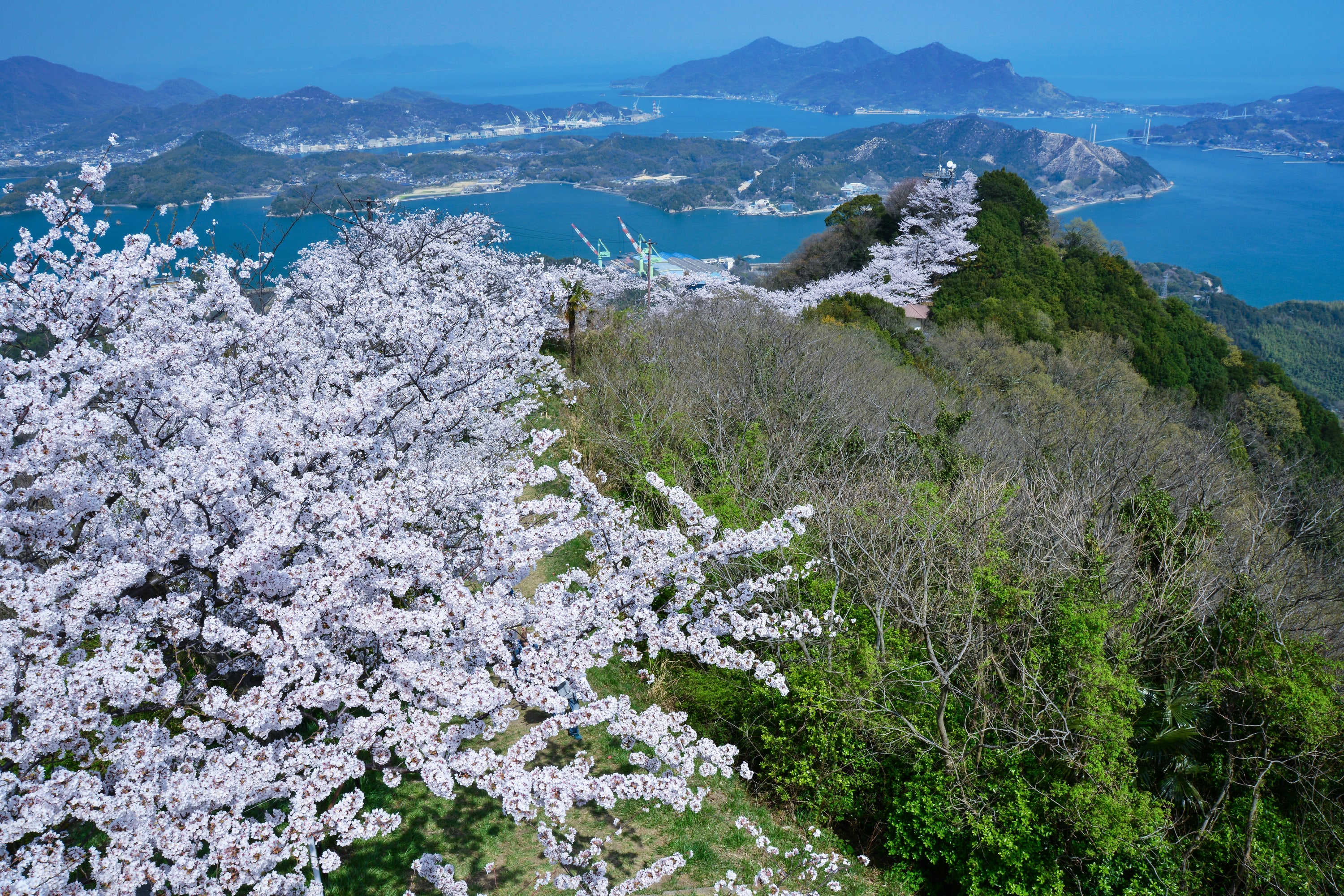
Views with the blossoms from Mount Sekizen in Setonaikai National Park
Flowering plant life
One of spring’s most colorful offerings is azaleas. Yahata in Nikko National Park is particularly famous for its azaleas, with 200,000 of them turning the landscape bright pink and filling the air with a sweet aroma. The Kyushu azalea is a species that is found high in the Kirishima mountain range, at elevations greater than 700 meters, in Kirishima-Kinkowan National Park. It is worth the hike to see colonies of these vibrant blooms covering the mountainside between May and June.
Oze National Park steps into spring in spectacular style, with elegant alpine flowers opening from around mid-May. Most notably, Oze’s marshland blooms with striking white skunk cabbage flowers, a plant far more charming than its name implies.
Other spring favorites include wisteria, which you’ll find artfully draped over trellises up and down Japan, while delicate irises open and yellow rapeseed flowers blanket fields. During the rainy season in June, blue, pink and purple hydrangeas dot hillsides.
Spring snow activities
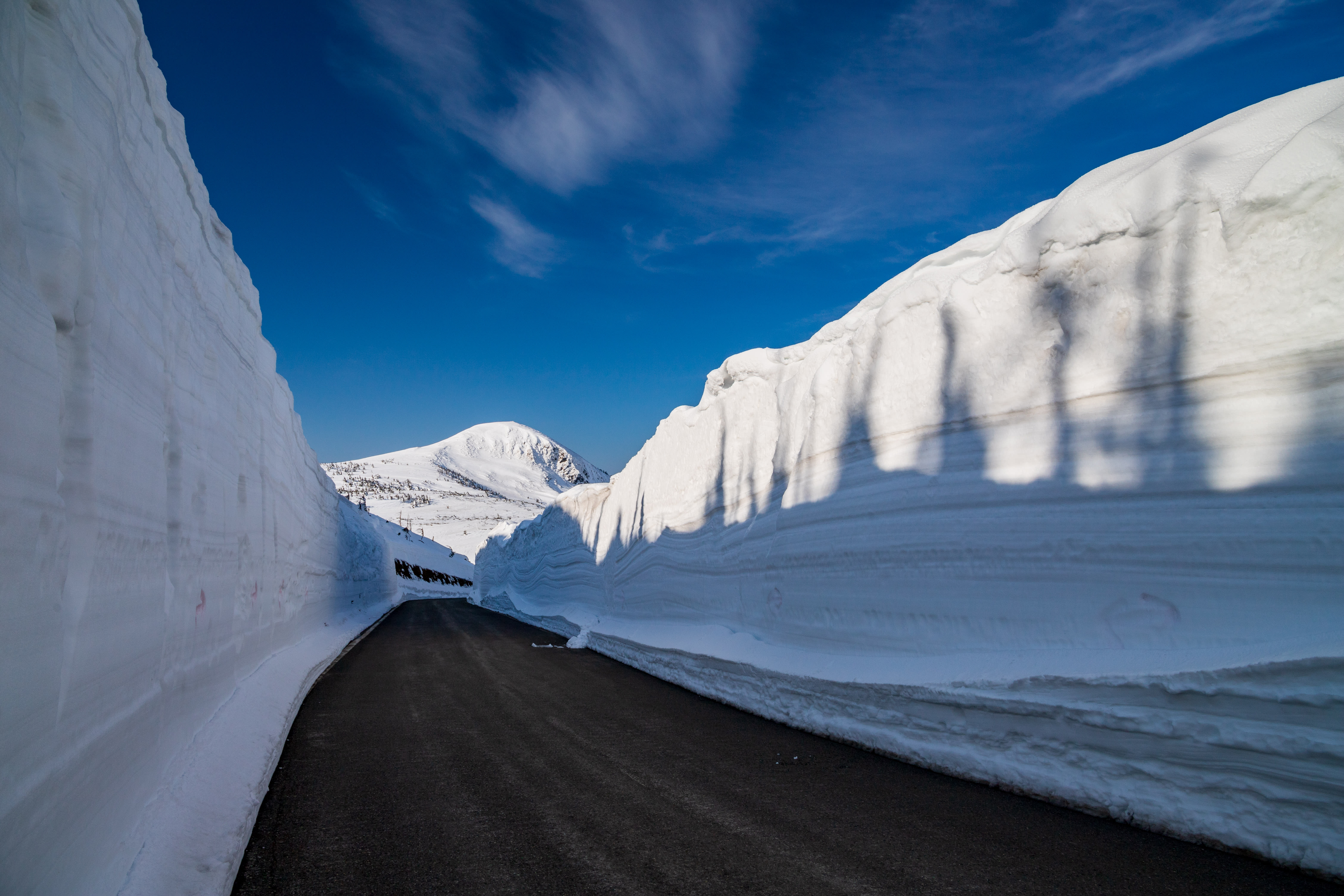
The snow corridor along the Hachimantai Aspite Line in Towada-Hachimantai National Park
Some northern and mountainous regions of Japan are still covered in deep snow throughout spring—a lovely time to experience snow while temperatures begin to warm. Tateyama Kurobe Alpine Route is Japan's best-known "snow corridor," a road carved through towering walls of compacted snow, but there are impressive snow corridors in other regions, too.
Special scenic tour buses traverse the incredible 10-meter high corridors around Mount Norikura in Chubusangaku National Park from late April to the end of June. The 27-kilometer scenic Hachimantai Aspite Line in Towada-Hachimantai National Park is a mountain road that runs between Iwate and Akita prefectures. The road is closed in winter but reopens in mid-April. Visitors to the Hachimantai area of the park in April and early May can drive or take a bus along this picturesque road with smooth vertical snow walls on each side.
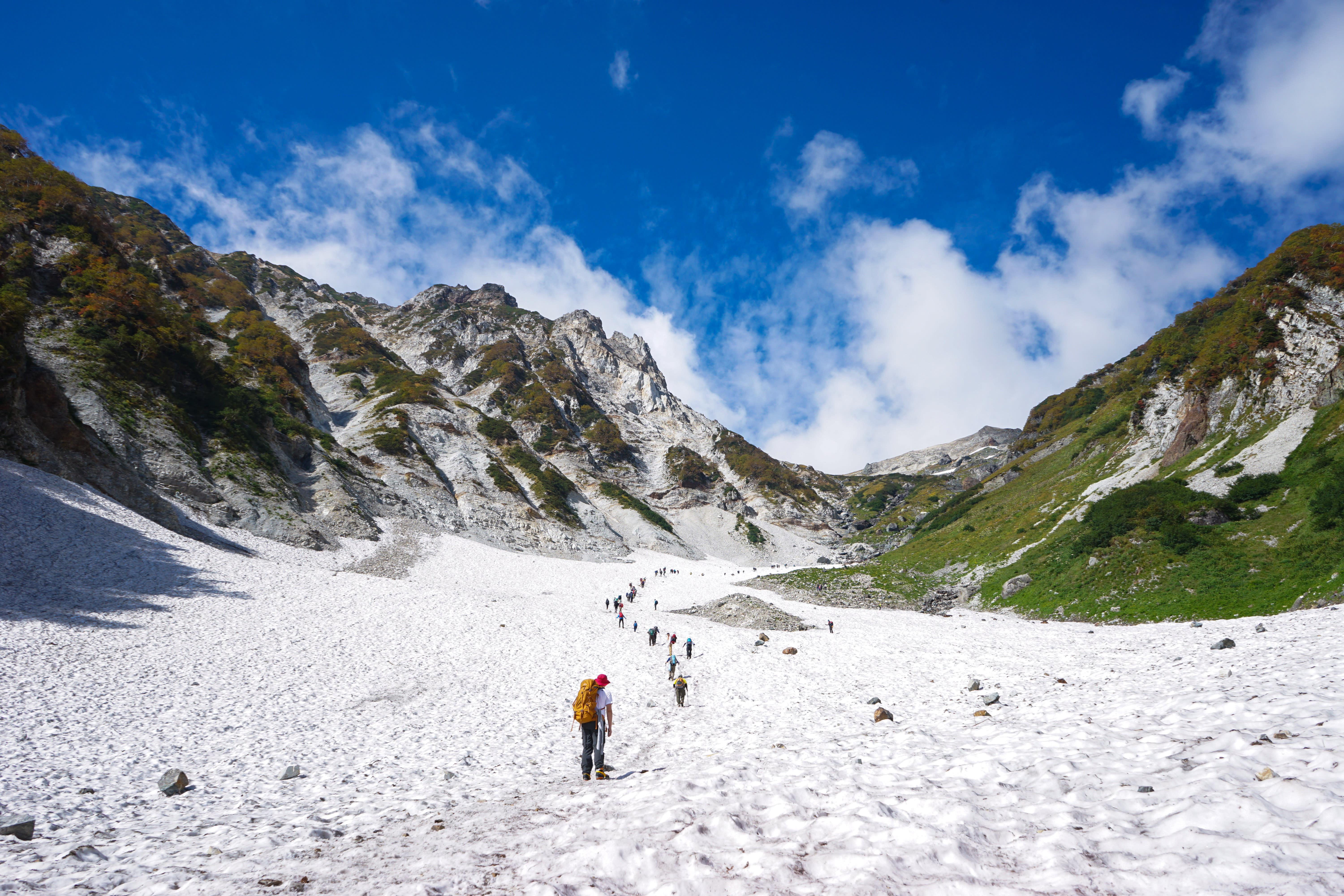
Climbing up Mount Shirouma in Chubusangaku National Park
The month of March is a good time to get in some last-minute snowshoeing on the remaining packed snow in Japan's mountainous regions, as winter transitions into spring. At high altitudes, mainly above 2,500 meters, you can find snow until the end of April. If you venture out into the mountains this time of year, it is best to go with a guide, monitor the weather, and make sure that you are trained in avalanche safety.
There are many options available, but one place you can try spring snowshoeing is Myoko-Tokagushi renzan National Park]. This park experiences some of Japan's heaviest snowfall and provides a magical backdrop for walking in the snow. You can wander through beech forests to Togakushi-jinja Shrine on a guided tour of the area, warming up with steaming hot coffee during hiking breaks.
Rafting and hiking
When the snow begins to melt in spring, Japan’s rivers swell, making fast-flowing, thrilling white water rafting conditions. Rafting along Tone River in Joshin'etsukogen National Park is considered some of the best globally, while log rafting along the Kitayama River in Yoshino-Kumano National Park is a more relaxed experience. This was once a way for locals to transport felled logs downstream and is now a unique tourist activity that provides a fascinating insight into a local tradition.
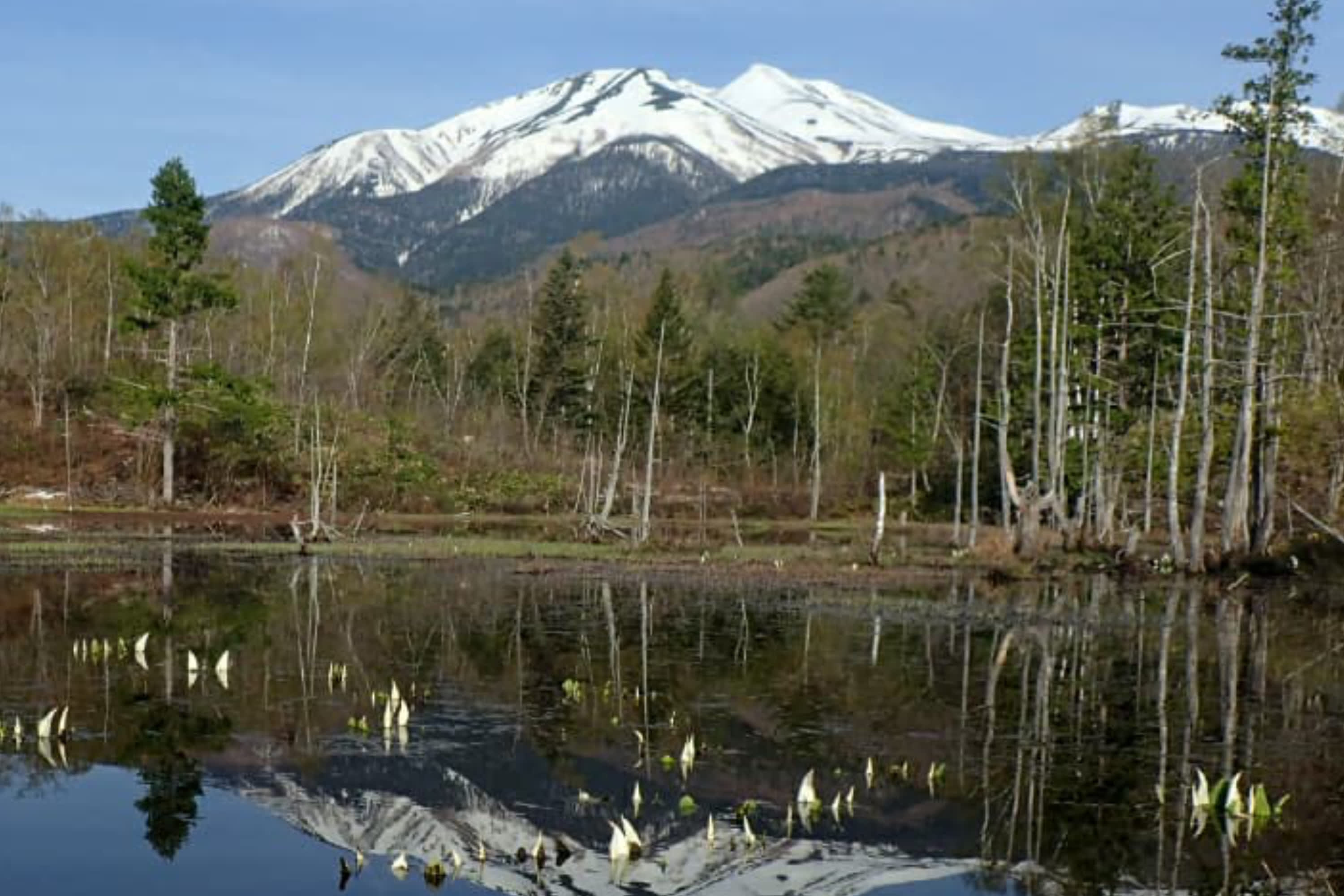
Alpine flowers in the highlands of Norikura Kogen in Chubusangaku National Park
In some parts of the country, spring marks the start of the hiking season. Kamikochi and Norikura Kogen in Chubusangaku National Park make great options. The weather is still chilly in spring, so wrap up warm when climbing the lofty peaks of the Japanese Alps. The stunning views are worth the chill. Snow still caps many of the peaks, including Mount Yakedake and Mount Hotakadake, while the basin below thaws out by around May, making room for alpine flowers to emerge, including rhododendron, forked viburnum and windflower.
Animal migrations and flourishing wildlife

The courtship dance of red-crowned cranes in Kushiroshitsugen National Park
The thaw of spring brings other new life, too. From March to April, Kushiroshitsugen National Park’s red-crowned cranes, a species once on the verge of extinction, perform their elaborate mating song and dance. After spending the winter in Japan, migratory bird species like Steller’s sea eagles leave Japan for far eastern Russia to breed. En route, they stop off in Japan’s northern lakes and marshes, where keen birders can spot them as they rest and refuel for the long journey ahead.
Other migratory species on the move in spring are elegant white-naped cranes, hooded cranes and other waterfowl leaving Kyushu for Siberia. Unseen by most, a migration occurs under the waves, too. From February to April, humpback whales arrive at Chichijima Island’s waters, part of Ogasawara National Park. Your best chance to see them is to take a whale-watching tour.

A humpback whale breaching in Ogasawara National Park
Spring sees Japan’s hibernating species begin to stir. Japan’s two bear species, the Asiatic black bear, which populates the islands of Honshu and Shikoku, and the Ussuri brown bear, which inhabits Hokkaido, hibernate over winter. In spring, they come out from hibernation, looking to eat and breed. In Hokkaido, the remarkable Ussurian tube-nosed bat cocoons itself in a den made of snow during winter—polar bears are the only other species known to do this. In spring, when the snow begins to melt, the bats are ready to emerge.
Written by Gaby Doman
